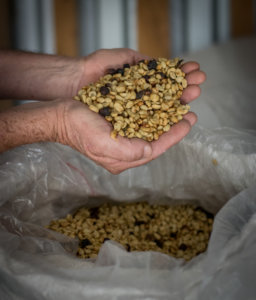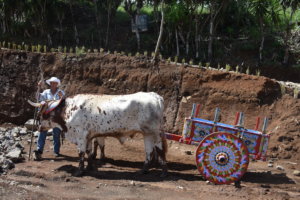Three Reasons to Have a Cup of Costa Rican Coffee
We hear: “Costa Rica” and what do we think? The ones who have heard about it probably imagine pictures of exotic beaches, tropical forests and peaceful people. And yes, that’s our touristic image. What if they say: “Costa Rican coffee”, do we think maybe Tarrazú? But the coffee from this land has a lot more to say.
We are not Colombia or Brazil, nor Kenya or the mythical lands of Ethiopia, but the coffee from Costa Rica is very special! We are going to give you just three reasons that we hope will motivate you to have a coffee from this Central American land of just 51 100 km2
The History: Coffee Runs Through Our Veins
Before coffee arrived to the Costa Rican economy, the country was not very developed. Coffee came to us in 1791; before our declaration of Independence. The historical records say that they were Arabica plants of the Typica variety and came from the Island of Martinique.
By 1820, we were able to export the first shipment of coffee and that’s when its growth started (and ours too). To coffee we owe important infrastructures like the railroads, electricity and even the National Theater. Costa Rica became an exporter and coffee was our “golden grain” for centuries.
Today coffee is not as crucial as in the past when it was almost the only product exported, but thousands of families continue to work with coffee specializing themselves more and more in the quality of their grain: all the coffee is harvested by hand, its cultivated at elevations between 800m up to 2000m and for now we only produce the arabica species.
The Land: Did you know that depending on the place coffee is grown it changes its flavor?
Thanks to the characteristics of Costa Rican territory, its microclimates and different types of soil, coffee can offer a wide variety of hues. With 200 years of experience the coffee farmers have become specialized in their region, searching for varieties and methods that better adapt to their farm. The ICAFE (Costa Rican Institute of Coffee) has mapped these zones and it has defined 8, each one with a distinct flavor profile.
The first five are:
- Tres Ríos: balanced cup.
- Turrialba: light body.
- Brunca: caramel notes.
- Guanacaste: low acidity.
- Orosí: floral and bitter.
The last three are available here at Fudi&Co:
- Valle Occidental: balanced cup, floral.
- Central Valley: chocolate, fine acidity.
- Tarrazu: fruity, citric acidity, aromatic.
The Hands: The Brave Coffee Producers
The most important part of the coffee industry has always been the hands that produce it. The Costa Rican coffee farmer has deep roots in his heritage, his land. According to ICAFE’s data 92 percent of producers have less than 5 hectares of land and represent 44 percent of the sown area in the country. A lot of producers give their fruit to big mills, others group together in cooperatives (very important in each region), and others take a larger leap: they start their own micro mill.
Even though each region is different not only in flavors, but also in challenges, they have in common the commitment to work for the best quality: Costa Rican coffee producers are known for the innovation and the care for the environment through good practices. The majority of coffee that is cultivated is from the caturra and catuaí varieties, but more producers are trying different varieties or hybrids with improved characteristics.
Their search for quality and differentiation has brought them to the third wave of coffee: where the consumer pays for a coffee that allows them to be more informed about its origin and even the plant. Their entrepreneur spirit and the search for an added value in a market where prices fluctuate, has driven hundreds of them to start their micro mills and process their own fruit. And they don’t stop there, these small producers have been pioneers in the famous “honey” processes, semi- washed, double- washed, natural and even other processes a little more daring like the anaerobic fermentation. Each one of them with a different flavor profile.
So, did we make you crave a cup of our coffee? If so, that makes us happy, because even though we are far from being one of the biggest coffee producers, we definitely work tirelessly on being able to bring you a specialty coffee.



